Hawaii is full of attractions that are unlike anything else in the world, but even among these unique wonders, Hawaii’s volcanoes stand out as truly remarkable. Hawaii Volcanoes National Park (HAVO) protects some of these natural marvels, including two of the largest, most active volcanoes in the world. If you’re looking to view lava, there’s no better destination than Hawaii Volcanoes National Park.
At the park, you’ll also be able to see landscapes, formations, and archeological sites created by these volcanoes. There’s so much to see and do inside the park, so if you want to make sure you don’t miss anything, Shaka Guide’s Volcanoes National Park driving tour has 18 stops throughout the park.
Brief History and Eruptions of HAVO
Hawaii Volcanoes National Parks contains two of the most active volcanoes in the world, including the single most active, Kilauea, which has been erupting for most of the last three-and-a-half decades. What's more, the volcanoes inside the park are shield volcanoes, which means their lava moves at slow speeds that are safe for viewing.
In 1983, Kilauea began erupting from its Pu‘u ‘Ō‘ō crater. Although the Lava moved slowly, it remained an unstoppable force and attempts to divert the lava were unsuccessful. Residents were challenged over the next thirty-five years of lava inundation with road closures, evacuations, and, unfortunately, lost homes until 2018 when the eruption finally stopped.
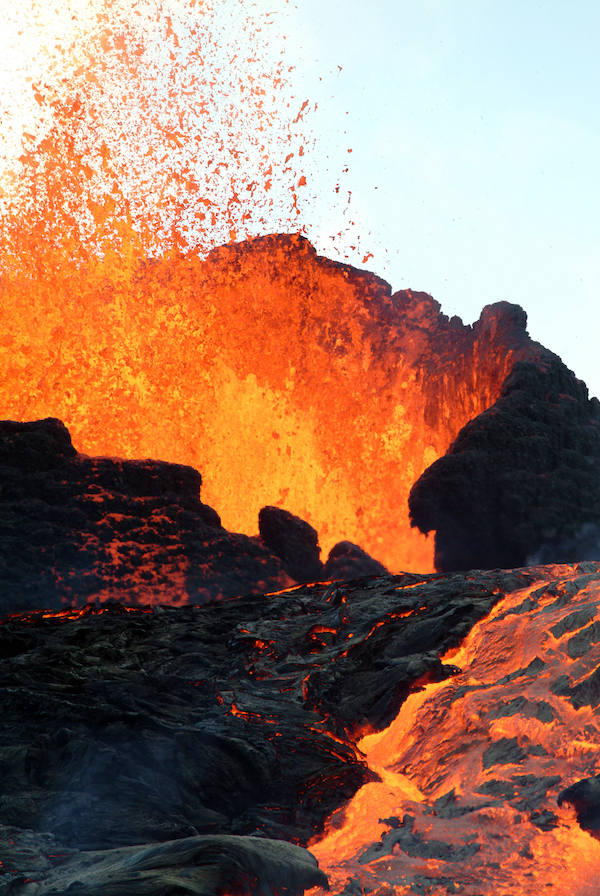
Following the 2018 eruption, lava stopped flowing in the park, but as of December 2020, Madame Pele is back at it. You can now see lava again at the park (depending on conditions - always check before). Lava is best seen at night along the south rim. You can walk about 1-mile to the Eruption Viewing Area near Keanakākoʻi to see the lava lake that has fomed at the bottom of Halema'uma'u Crater in Kilauea. You can also head to Kilauea Lookout (a stop on our Volcanoes National Park Tour) during the day to see steam and gas rising from the ground. Check out our video under the "Where to See Lava in Hawaii" section for everything you need to know.
Active Volcanoes in Hawaii
Most of Hawaii’s volcanoes are dormant or extinct. Of the five active volcanoes in Hawaii, four are on or adjacent to the Big Island. And, of these, two are within the boundaries of Hawaii Volcanoes National Park. These are Kilauea and Mauna Loa, the most active and largest volcanoes in the world, respectively.
Where to See Lava in Hawaii
After the 2018 eruotion and up until December 2020 there are were no lava flows in Hawaii. However, that month Pele was back at work and a lava lake formed in the Kilauea's crater. The eruption is still underway and as of January 2022, you can still see lava in Hawaii. Watch our video below for everything you need to know about where to see lava right now!
Also, visit the National Park Service's website periodically to stay up to date on changes in the park.
Listen to Hawaii's Best Podcast with our Co-Founder, Andrew Fowers to learn more about the legends of Pele, the goddess of Volcanoes and Fire, and where to see lava in the park!
 Lava from the Kilauea Volcano hitting the ocean | Photo by Cedric Letsch
Lava from the Kilauea Volcano hitting the ocean | Photo by Cedric Letsch
Mauna Loa’s last eruption was in 1984, and scientists are saying it could happen again anytime. In the mid-90s, Mauna Loa seemed ready to burst, however, a large chunk of the volcano shifted south allowing a larger magma chamber to form underground, which relieved the building pressure. For now…
Things to See in Hawaii Volcanoes National Park
There’s plenty to do and see inside the park’s boundaries, even without the lava. Between the hikes, backpacking, camping, ancient petroglyphs, and geological formations, you’re more likely to be overwhelmed than bored. Here are some of the park’s most popular attractions.
Please Note: Some parts of the park are closed due to Covid 19. Be sure to check the National Park Service's website prior to your visit.
Hiking Kilauea Iki Crater
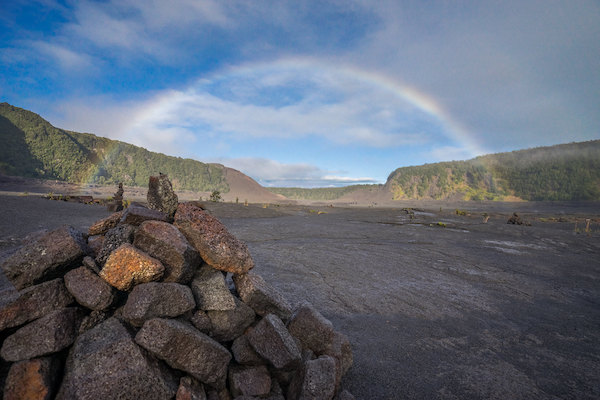 Take a deep breath before you continue trekking the Kilauea Iki Crater hike; Heath Cajandig / Flickr; CC-BY-2.0
Take a deep breath before you continue trekking the Kilauea Iki Crater hike; Heath Cajandig / Flickr; CC-BY-2.0
The hiking through Hawaii Volcanoes National Park is all wonderfully unique, and the Kilauea Iki Crater trail exemplifies the one-of-a-kind beauty you’ll find inside the park. This day hike begins at a parking lot along Crater Rim Drive.
You’ll take the trail form the head a few hundred yards, linking back up with Crater Rim Drive. This is also a great time to visit the Thurston Lava Tube, which you can read more about in the next section. The trail then begins the descent into the crater through a lush rainforest jungle. You’ll know you’ve arrived at the crater when you see it. The sight of an almost 2000-foot high eruption in 1959, the Kilauea Iki crater is an immense, barren, steaming landscape that you’ll have to see to believe.
The Kilauea Iki Crater hike is a four-mile loop of moderate difficulty. The crater can also be viewed from the scenic overlook where you park if you aren't looking to hike. (Pro tip: on our Volcanoes National Park Tour we'll give you a Kilauea Ike hike short cut).
Hike to Halema’uma’u Crater
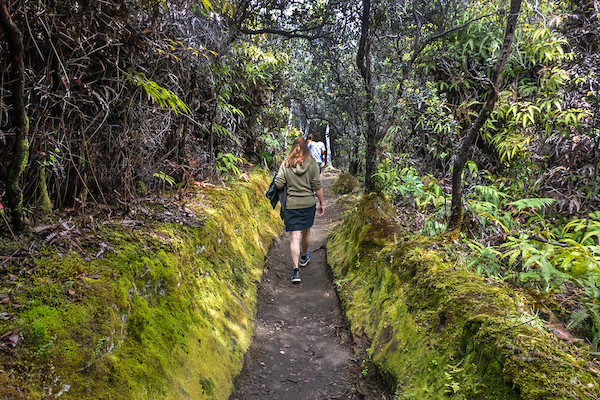 Walking between the moss covered rocks on the Halemaʻumaʻu trail
Walking between the moss covered rocks on the Halemaʻumaʻu trail
Halema’uma’u is the center of activity inside the much larger Kilauea Caldera Crater in terms of lava and the native Hawaiian religion. Until vents opened up in lower puna in 2018, the crater was a full-on lava pond. However, much of this lava flowed from these puna vents and this, combined with a large collapse around the crater, caused the lava to no longer be visible. In addition to being a ‘hotbed’ of volcanic activity, the Halema’uma’u crater was said to be the home of the volcano goddess Pele.
You can take an awesome hike through the Halemaumau area if this sounds interesting to you. The landscape will likely seem quite foreign, as this rainforest has burned and re-established itself several times over creating an intriguing lava rock/jungle juxtaposition. The Halema’uma’u trail is 1.6 miles round trip of easy difficulty. Watch your feet, though, there are a few places you could trip and fall if you're not careful. You can't see the crater from the road, so if you want to view the area you'll have to hike in!
Thurston Lava Tube
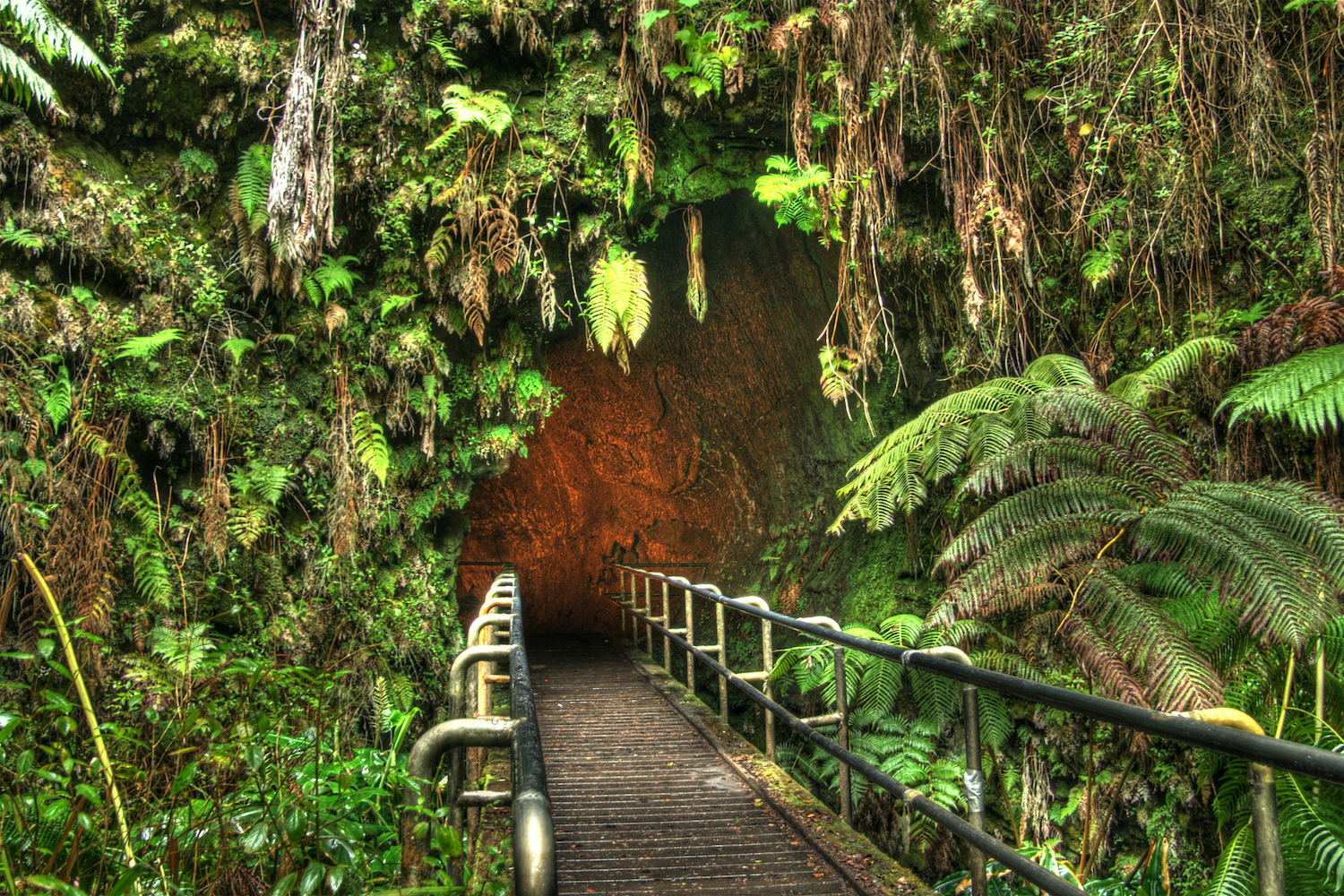
Lava tubes are created when the top layer of a lava flow cools against the air. The stream of lava underneath, however, continues to flow and gradually cool, creating walls and a thicker roof. This insulation allows the stream to stay hot and continue flowing. At some point, the lava flow runs dry, leaving a hollow tube.
Thurston Lava Tube is a massive cave, which visitors are welcomed to explore. A new electrical system was recently installed in early 2018, which lights the tube and also emits rays that inhibit the growth of invasive species. From 8 p.m. to 10 a.m. the tube is left dark for viewers that would rather experience the tube in its natural state. You’re required to bring a flashlight to enter Thurston Lava Tube. Thurston Lava Tube is closed due to Covid 19.
View Petroglyphs
Over 23,000 petroglyphs can be viewed along the Pu'u Loa Petroglyph Boardwalk hike. These beautiful cultural and historical artifacts were used to record travels, navigate, express wellbeing, and record events and births. Along the short hike, you can see images of circular motifs, geometric designs, human representations, canoes, and other objects from ancient Hawaiian life that are dated between 1200-1450 CE. The hike is 1.4 miles and rated easy since it is along a wooden boardwalk.
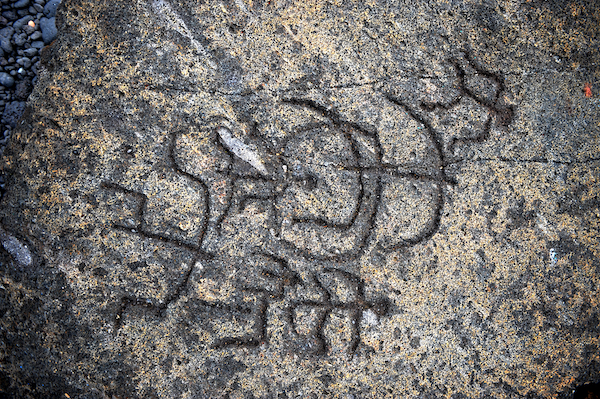
Historical petroglyphs of Pu'u Loa
Other Hiking Trails
There are six other trails throughout the park that you might also be interested in taking. The sulfur bank is an easy hike along a wooden boardwalk that offers yet another wholly unique landscape with colorful, steaming mineral deposits. Or, you could view the beginning stages of returning life along the mile-long Devastation Trail. You can view all the trails available inside the park here.
 Check out the Sulphur banks at Ha‘akulamanu outgassing deposits of carbon dioxide, sulfur dioxide and hydrogen sulfide; daveynin / Flickr; CC-BY-2.0
Check out the Sulphur banks at Ha‘akulamanu outgassing deposits of carbon dioxide, sulfur dioxide and hydrogen sulfide; daveynin / Flickr; CC-BY-2.0
Backcountry Hiking and Open Areas
If you’d rather hike off-trail or through open country, there are seven areas throughout HAVO and its two volcanoes perfect for trailblazing or backpacking. Keep in mind that these areas are badly overgrown and not heavily trafficked. Cairns guiding you through the park are often not visible or damaged, so it is best to bring a GPS system just in case.
Halape is the most popular of the backcountry hikes, but Apua is equally beautiful and both treks follows along the park’s magnificent coasts. You can also hike through the more remote Ka’aha coastal lava field, Keauhou Bay, Napua Crater, and Pepeiao’s grassy lava fields. Each of these adventures should only be carried out by experienced hikers. The area’s most strenuous hike goes up Mauna Loa, the world’s largest volcano.
You’ll need to pay a $10 fee to enter any of these areas, which also grants access to campsites that are available along each adventure.

Camping
There are several great camping sites available throughout the park. Each requires a permit and some require advanced reservations. Permits for backcountry camping are $10 and are included with your self-service pay station fee. Permits for the two drive-in camping grounds, Kulanaokuaiki and Nāmakanipaio Campgrounds, cost $10 and $15 per night, respectively.
You can also reserve cabins at the Nāmakanipaio campground for $80 per night or other accommodations in and around the park here.
Kīlauea Visitor Center
The Hawaii Volcanoes National Park Visitor’s Center should be your first stop at Hawaii Volcanoes National Park. The center’s staff can give you the most up-to-date safety and closure information, and they are also excellent sources of knowledge and act as a sort of park concierge. There are also park exhibits focusing on the Island’s formation, wildlife, ecosystems, and protection inside the Visitor Center.
The center’s standard hours are 9 a.m. to 5 p.m. every day, however, these times are subject to change depending on park happenings like eruptions and events. If you’re looking for more information, you can reach the visitor center at (808) 985-6000. The visitor center is currently closed due to Covid 19.
 Find out what's inside and learn more at the Kīlauea Visitor Center; Hawaii Volcanoes National Park / Flickr; Public domain
Find out what's inside and learn more at the Kīlauea Visitor Center; Hawaii Volcanoes National Park / Flickr; Public domain
RELATED: Volcanoes National Park: 31+ Things to Do
Visitor Information and FAQs
Map and Directions
There are two entrances to the Hawaii Volcanoes National Park. To get to the park from Hilo, follow Highway 11 all the way through the town of Volcano. You can also enter the park from the west by traveling southwest on Highway 11. The visitor center is located at 1 Crater Rim Drive, Volcano, HI 96785.
HAVO’s website has an excellent interactive map.
HAVO Safety
Hawaii Volcanoes National Park was closed for a long time following eruptions and collapses that damaged much of the park’s infrastructure in 2018. The park has reopened, however, there are new safety guidelines that you should be aware of before entering the park.
First and foremost, bring lots of water. The only place to refill your bottle will be at the visitor center. You shouldn’t count on finding water at any of the attractions, so bring plenty of your own.
Many cracks and sinkholes have also opened up due to the 2018 activity. Stay far away from the edges, as these areas are inherently unstable. Similarly, stay away from cliffs since the park is currently at increased risk of rockfalls and slides.
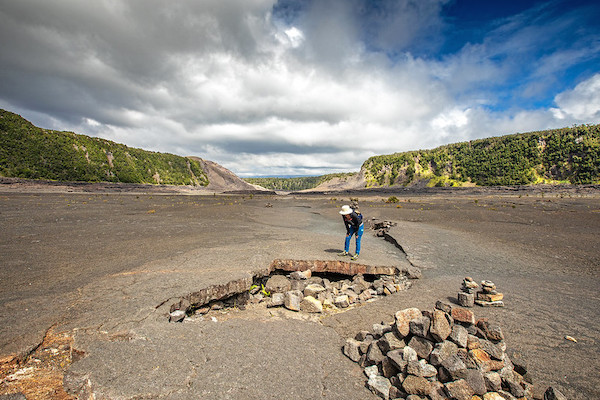 Bring lots of water, it can get quite hot; Hawaii Volcanoes National Park, NPS Photo by Janice Wei / Flickr; Public domain
Bring lots of water, it can get quite hot; Hawaii Volcanoes National Park, NPS Photo by Janice Wei / Flickr; Public domain
How is the weather?
The weather varies a lot inside the park depending on the elevation. The lava fields at lower elevations can be warm while higher elevations can get down into the 50's. Wear layers and pack a jacket to prepare for these changing temperatures.
Can I Do Hawaii Volcanoes National Park in One Day?
You can’t trek the whole park in a day, but with the right help you can see most of the park’s popular attractions in a day! Shaka Guide offers an audio driving tour that starts at the park's entrance and visits major hikes, scenic spots and attractions within the park. It can be completed in about 6 hours.
Visiting Hawaii Volcanoes National Park with Kids?
Outdoorsy kids will love Volcanoes National Park and all of the natural wonder that has to offer. HAVO also offers a park-specific Junior Ranger program and Hawaii Island National Parks Junior Ranger program. The park-specific program offers two handbooks, one for children under the age of 7 and one for 7 to 12-year-olds.
You can also download and print other children’s activities for the park here.
Hours?
The park itself is open to visitors 24/7, 365 days a year. The Visitor Center is open from 9 a.m. to 5 p.m. Do not explore the park at night without a flashlight.
Fees?
Entrance to the park costs $30 per vehicle. There are also several designated National Park free days, which you can check here.
Some of the open country and backcountry hiking areas also have a $10 fee. The two campgrounds have $10 or $15 fees depending on where you stay.
How Much of HAVO is Wheelchair Accessible?
Much of the park is wheelchair accessible, including a few of the hikes which follow boardwalk paths. Ha'akulamanu Sulphur Banks Trail and the Steaming Bluff are both Wheelchair accessible. Wheelchair accessible bathrooms can be found at the Kīlauea Visitor Center, Volcano House, Kīpukapuaulu picnic area, and Mauna Ulu.
Wheelchairs are available for use from the Kilauea Visitor Center.
Are Any Tours Available?
The park itself doesn’t offer any tours, but it does have several special programs available which are excellent sources of information and entertainment. You can check up on the current special events here. Of course, Shaka Guide offers an awesome audio tour through the park. Guided bus tours are also available.
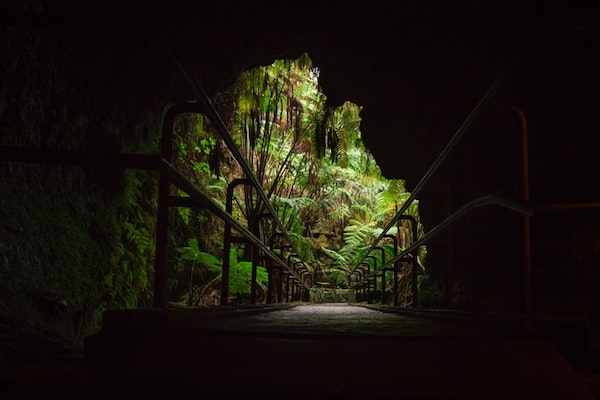 Discover the many sceneries and flora at the Hawaii Volcanoes National Park | Photo by Steve Halama / Unsplash
Discover the many sceneries and flora at the Hawaii Volcanoes National Park | Photo by Steve Halama / Unsplash
What Should I Bring and Wear?
Be sure to bring plenty of water, sunblock, and money for any of the fees you’ll be paying (at least $30). The $30 park entrance fee can be paid with card, but some of the other self-service pay stations will require cash.
You should dress in layers since temperatures in the park vary a lot depending on altitude. You’ll probably want a hat, as well, since you’ll likely be in direct sunlight most of your time in the park. Be sure to wear closed-toe shoes for all the walking and hiking.
Should You Take a Tour or Drive Yourself?
Both! You can take a tour through the park and have your own vehicle available for exploration if you use Shaka Guide's Hawaii Volcanoes National Park Driving Audio Tour!
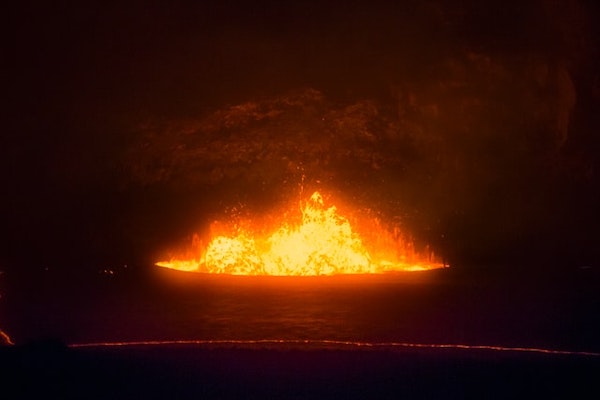 Steve Halama / Unsplash
Steve Halama / Unsplash
When is the Best Time to Visit?
It’s always a good time to visit HAVO. If you’re only going to view lava, you can go right now! The weather on the eastern side of the island tends to be a bit more rainy than the west coast, and Volcanoes National Park is certainly a place you can visit with some drizzle.
Is Hawaii Volcanoes National Park Still Worth the Trip?
YES! Although a portion of the park was damaged by recent lava flows, there is still a ton to see, do, and experience throughout the park’s open attractions. In fact, seeing the landscape's plant life reestablish itself as it has many times before is one of the most surreal experiences that Volcanoes National Park has to offer.
When you’re in Hawaii, we ask that you act respectfully towards the locals, land and wildlife. Please pick up your trash; never touch any marine life, plants, or other animals; and avoid spots that are unsafe. Hawaii’s natural resources are precious, it’s up to all of us to help preserve these resources.
RELATED: If you Only Have Time for One Big Island Hike Make it Pololu Valley
SHAKA GUIDE'S BIG ISLAND TOURS: Kohala Coast Backcountry Tour, North Island Jungle Adventure Loop, South Island Epic Coastal Journey, Kona Big Kahuna Loop, Volcanoes National Park Driving Tour